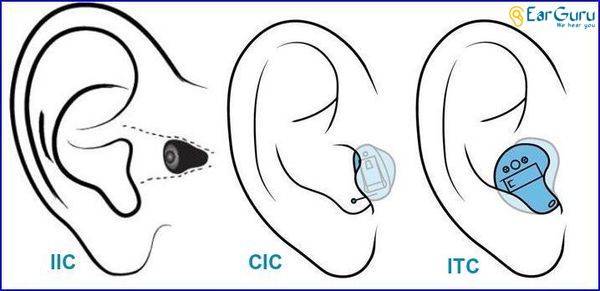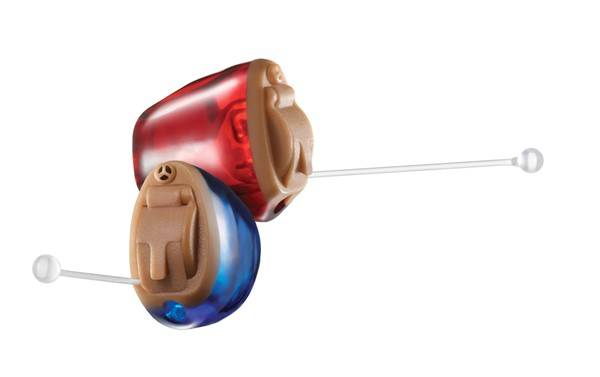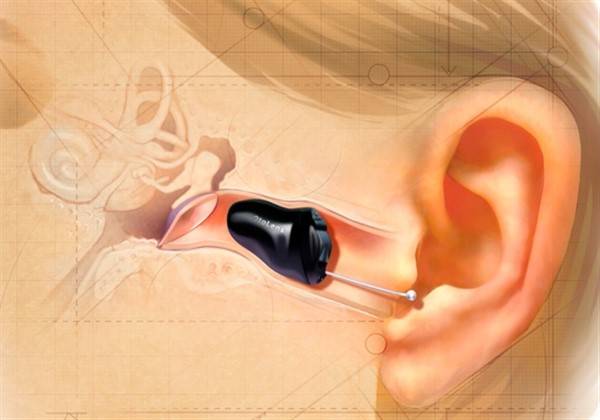Invisible Hearing aids as the name suggests are Hearing aids which are not seen or are invisible to others. The small Hearing aids slide and fit deep into the ear canal with the tip reaching close to the eardrum. But do all Hearing aids which are not seen can be called Invisible?
Technically speaking this is not entirely true. Some small ITC’s and CIC’s are also fitted deep in the canal and are hardly noticeable but they are not “Invisible in the Canal” or IIC Hearing aid.
What Exactly is an IIC or Invisible in the Canal Hearing Aid?
Invisible in the Canal Hearing aid or IIC is a style of Hearing aid which is smaller than a CIC. The IIC or invisible Hearing aid is inserted deep beyond the second bend of the ear canal. Comparatively an ITC or a CIC Hearing aid however small fits into the outer part or before the second bend of the ear canal. Due to its small size the ITC or CIC may not noticeable or is almost invisible but it is not an IIC Hearing aid.
In the case of an ITC or a CIC, the faceplate or the front plate is visible. Some manufacturers do provide controls like a small volume control and a program change button on the faceplate of ITC and CIC Hearing aid. In case of an IIC, there are no controls on the faceplate. The small faceplate has a battery drawer. This does not leave room for any controls on the faceplate nor can the user activate the control as the small Hearing aid is not reachable except in some cases with our little finger. The manufacturer provides a nylon string or pulling thread to pull the Hearing aid out for cleaning, storing before retiring or for changing batteries.

Invisible Hearing Amplifier Technology
Hearing aid manufacturers have 2 challenges while designing new models.
- Making the Hearing aids smaller in size
- Improving sound quality and features
The advances in Digital electronics is helping them achieve both. Invisible Hearing amplifier technology has made Hearing aids virtually invisible. With every new product launch, the manufacturers have been successful in reducing the size of the invisible Hearing aids or IIC. Improvement in sound quality and useful features like Bluetooth connectivity and Remote control are becoming a standard provision.
Before you make a decision, there are certain important things to know before buying an Invisible Hearing aid or an IIC.
We would like to caution you that your new hearing aids may not sound good initially, you need time to get used to them. This is true for all types of hearing aids and not only for IIC’s. We advise you to read our article on 15 Helpful Tips For Getting Used To Hearing Aids.
Advantages or Pros of Invisible Hearing aids

- The most important advantage of the invisible Hearing aid is its small size. Some people avoid using Hearing aids because of the visibility factor. These people can now comfortably use an IIC. Since the Hearing aid fits beyond the second bend of the ear canal, it is not visible.
- There are no external wires or tubes. The complete Hearing aid with the battery fits into the ear canal.
- The IIC Hearing aid is small and lightweight, the user is very comfortable and uses them regularly.
- Since the IIC Hearing aid fits deep in the canal, the sound picked up by the microphone is more natural. The microphone does not pick up wind noise and other unwanted sounds.
- The user can speak on the telephone in a normal manner with the telephone earpiece close to the ear or can use Headphones.
- Doctors with Hearing loss can use stethoscopes. This is not possible if the Hearing aid is fitted in the outer ear canal.
- Since the Hearing aid receiver is close to the eardrum, it requires less power for amplification. This results in lower distortion and clear speech.
- The latest models have Bluetooth connectivity, Remote control, multi programs and ear to ear streaming for phones.
Disadvantages or Cons of Invisible Hearing Aids

- The IIC does not suit people with a very narrow ear canal. People having a collapsed or a deformed ear canal cannot use this style of Hearing aid.
- People having profound Hearing loss cannot use an IIC. Due to the small size of the amplifier components, the amplification is less compared to a BTE. New invisible Hearing aids are available for severe to a severely-profound category of Hearing loss.
- The life of the battery is short due to its small size. The user has to replace batteries often. It is not a disadvantage if the cost is affordable or if the manufacturer provides rechargeable batteries.
- Since the Hearing aid is close to the eardrum, there are more chances of wax blocking the opening. Regular maintenance is necessary. People with excessive earwax generation should be aware before buying an IIC Hearing aid.
- It is not advisable for the elderly with unsteady hands to use an IIC unless they have someone to assist them. The Hearing aid should not fall while Inserting or removing. The brittle shell can crack if it falls on the floor or a hard surface.
- It is not advisable to use the invisible or any style of In the Ear Hearing aid if there is a discharge from the ears. The discharge will seep into the Hearing aid and damage the electronic parts. For these cases, BTE Hearing aid is the best option.
- People with ruptured eardrum or frequent infections should avoid using IIC Hearing aids. It is advisable to consult your Audiologist before making the decision.
- Some users might get the plugged up or occluded feeling. Due to the small size of the Hearing aid venting is not possible. Venting is a method to release the pressure to reduce the occlusion or plugged in feeling.
Besides the above features, one should also consider their lifestyle before selecting the style of Hearing aid. A discussion with your Audiologist will help you in selecting the right style for you. A wrong choice normally results in the reluctant or occasional use of Hearing aid which reduces the benefits.
About the Author

